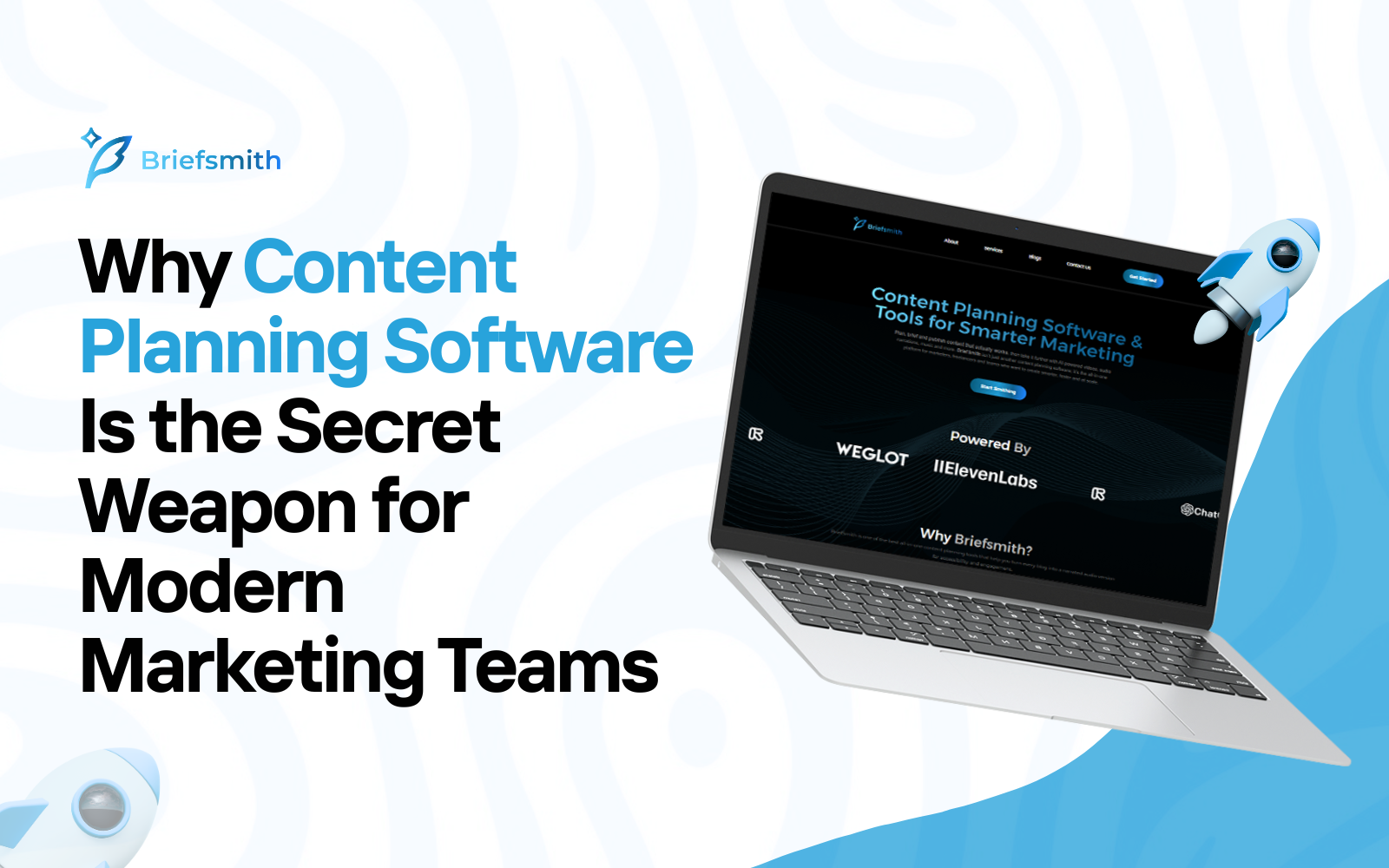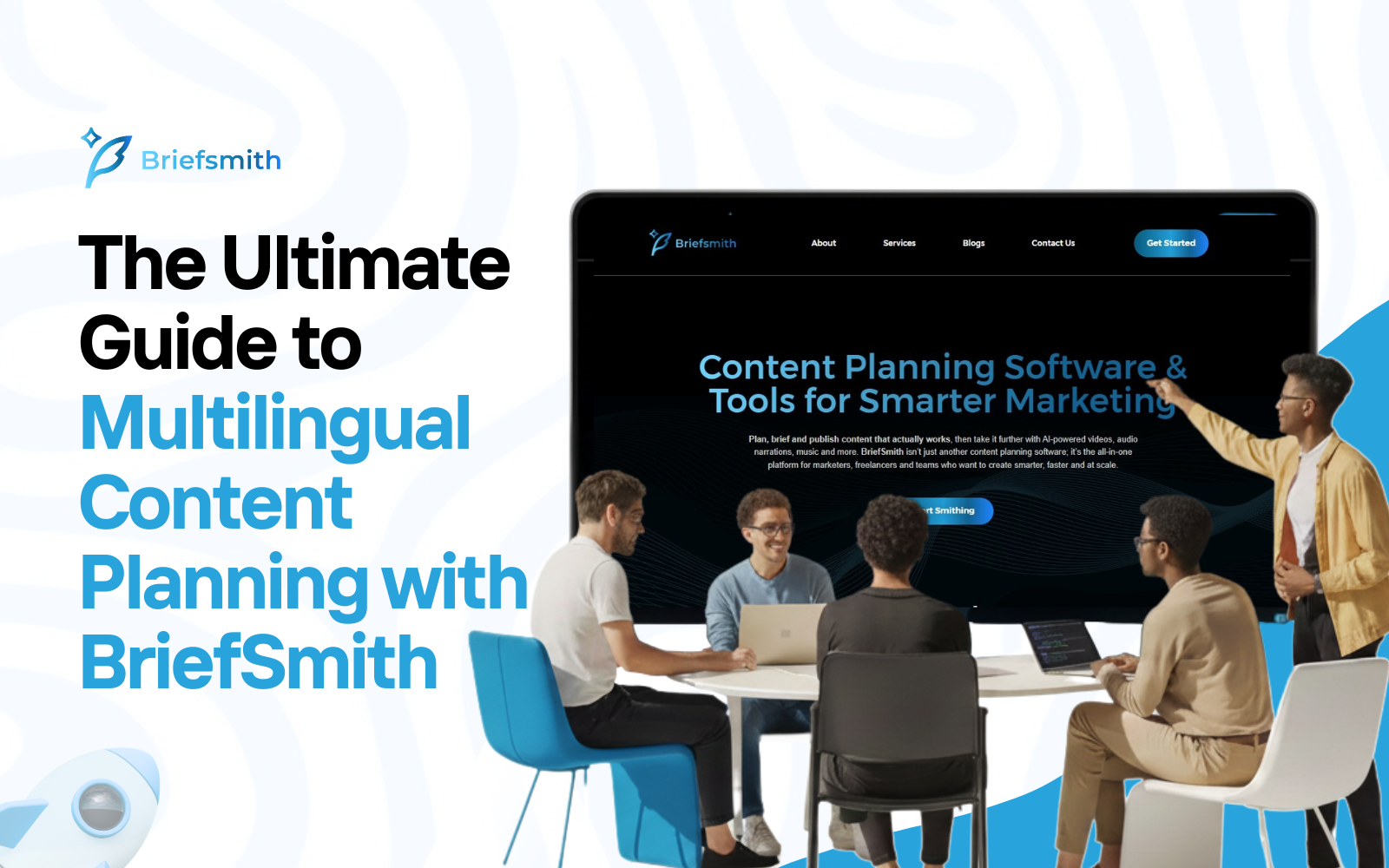Why Content Planning Software Is the Secret Weapon for Modern Marketing Teams

The Modern Marketing Problem: Too Much Content, Too Little Structure
Marketing teams today aren’t struggling with a lack of ideas. The real challenge is how to organize, prioritize and deliver content consistently. Between social media posts, blogs, email campaigns and videos, the demands are endless.
Many teams start with spreadsheets, sticky notes, or a shared Google Doc. It works for a while, until deadlines start slipping, writers don’t know what to prioritize and executives ask, “Why are we creating this content in the first place?”
This is where content planning software comes in.
What Is Content Planning Software?
At its core, content planning software is a centralized system that helps teams:
- Map out upcoming content campaigns
- Align pieces with broader marketing goals
- Assign tasks and track deadlines
- Build content briefs that give writers structure and direction
- Ensure content is SEO-optimized and strategy-driven
Unlike spreadsheets, content planning tools aren’t static. They adapt to shifting priorities, support collaboration and provide a clear roadmap for everyone involved in the process.
Curious about how a content brief fits into all this? We explain it in detail in SEO Content Briefs: The Missing Link Between Strategy and Results.
Why Spreadsheets Don’t Cut It Anymore
If you’re still managing content on spreadsheets, here’s what you already know:
- They’re hard to scale. Once you’re tracking more than a handful of campaigns, the document becomes messy and overwhelming.
- Collaboration is clunky. Comments pile up, people overwrite each other and version control becomes a nightmare.
- They lack strategy. A spreadsheet tells you what to post, but it doesn’t remind you why you’re posting it or how it ties back to SEO and marketing goals.
Content planning software solves these problems by giving you a living, breathing system instead of a static grid.
The Real Benefits of Content Planning Software
1. Clarity and Alignment
Everyone on the team knows what’s being created, why it matters and when it’s due. No more last-minute scrambles or duplicate content.
2. Smarter Briefs, Faster Output
Well-written content starts with a strong brief. Good planning tools (like Briefsmith) help you generate briefs quickly while ensuring they’re aligned with SEO best practices.
(Want to see how AI can make this even faster? Check out AI Content Brief Generators: Do They Really Save You Time?
3. Better SEO Integration
Instead of writing content in isolation, planning software helps you build around keywords, search intent and ranking opportunities. This means your content isn’t just consistent, it’s discoverable.
4. Improved Collaboration
From writers and editors to designers and SEO managers, everyone works from the same source of truth. That means fewer Slack threads and fewer “Where’s the latest draft?” messages.
5. Time Savings
The biggest win is efficiency. With automation and AI features, teams can spend less time managing logistics and more time creating content that drives results.
How Briefsmith Approaches Content Planning
Not all planning tools are created equal. Some focus on scheduling, others on project management. Briefsmith was designed with content marketing teams in mind.
Here’s how it stands out:
- AI-Powered Briefs: Instead of spending hours researching keywords and structuring outlines, you can generate a detailed, SEO-friendly brief in minutes.
- Strategy-Driven Planning: Every piece of content can be tied back to your marketing goals, making it easier to prove ROI.
- Streamlined Collaboration: Writers, editors and managers can all work in the same space, with clear visibility into progress.
- Adaptable Workflows: Whether you’re planning a weekly blog or a multi-channel campaign, the tool adapts to your process.
For a deeper dive into the differences between tools, read Content Planning Tools vs. Spreadsheets: What Saves You More Time?
Who Needs Content Planning Software?
Content planning tools aren’t just for large marketing departments. They’re useful for:
- Agencies juggling multiple client campaigns
- In-house teams managing cross-channel content
- Freelancers who need to keep projects organized and professional
- Small businesses looking to scale their content efforts without hiring a full team
No matter the size, the need is the same: clarity, efficiency and content that doesn’t go to waste.
Common Mistakes Teams Make Without Planning Software
- Focusing on quantity over quality. Churning out posts without a clear purpose leads to low engagement.
- Ignoring SEO. Without a system, keyword research often gets skipped, meaning content never ranks.
- Lack of accountability. Missed deadlines pile up because there’s no shared visibility.
- Strategy disconnect. Content exists in silos instead of supporting larger marketing goals.
These mistakes don’t just waste time, they waste budget. A planning tool prevents them from happening in the first place.
Is It Really Worth the Investment?
Some teams hesitate to adopt new tools, thinking they can “make do” with what they have. But consider this:
- If your writers spend an extra 2–3 hours a week figuring out briefs, that adds up to hundreds of hours over a year.
- If campaigns launch late or inconsistent content confuses your audience, the cost is lost opportunities.
- If you can’t prove ROI on your content, budgets shrink.
Investing in a tool like Briefsmith isn’t about replacing your team. It’s about giving them the structure and insights to do their best work.
Final Thoughts
Content planning software isn’t a luxury anymore, it’s a necessity. Teams that adopt it gain clarity, consistency and efficiency. Teams that don’t are stuck in a cycle of chaos, missed deadlines and underperforming content.
If your marketing feels reactive instead of strategic, it might be time to make the switch. BriefSmith is built to help you plan smarter, brief faster and create content that actually delivers results.



